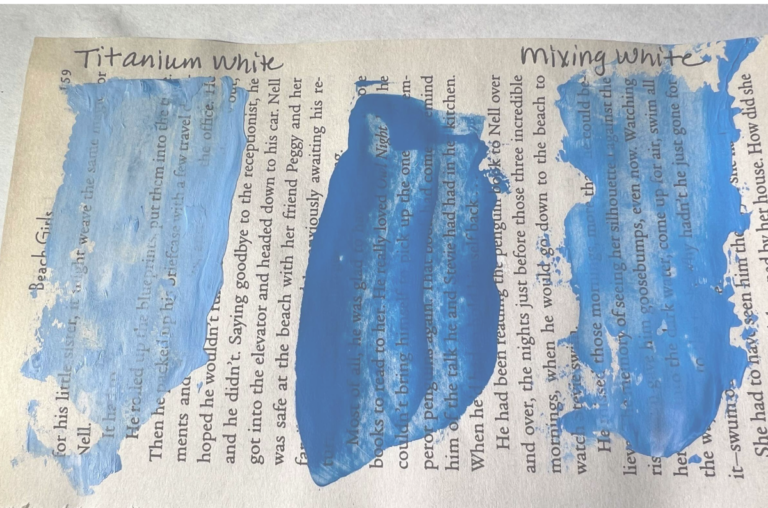Facing the Blank Page
Mixed Media Moments is community-supported, and we are committed to never putting ads on the site; M3 reviews and stories may include affiliate links. If you click one and make a purchase, I may receive a small commission at no additional cost to you, however, I will only recommend products that I have personally vetted. M3 does not accept money for reviews and all opinions are strictly my own.
When I first started making art, there was nothing scarier than looking at a blank page or canvas, wondering how to begin the piece. So many times, I had a firm idea of what I wanted the finished piece to look like, but I would sit there, almost paralyzed, afraid – or more accurately, uncertain as to how to create what I was seeing in my head.
I eventually learned that the best way to counter the empty page was to put something on it – pronto! – so that it wasn’t empty anymore. Because my art form of choice is mixed media, where layers are key, just getting something on the page works! If I were doing a watercolor still life, it might not, but for mixed media, it’s a great idea.
Here are my three favorite ways to get started
Scribble random thoughts across the page in a haphazard fashion. Since I’m going to be layering over them, I’m not worried about someone reading my personal writing. And if I am concerned about that, I can always write in a non-legible way. Trust me, that’s no real challenge for me! In addition to getting something on the page, I feel as though it gives the piece a bit of depth that it wouldn’t otherwise have, as it puts some of my emotions into the piece.

Another favorite way to get something on the page quickly is with random collage. I’m not trying to make anything but an interesting layer, so I don’t take time to worry about composition and balance and all those design principles that play into the piece later. I don’t need to cover the entire surface, either. When I’m using collage as my first layer, I often try to cover about a third to a half of the page. I use either all discarded book paper or all black and white patterned tissue paper.

My third favorite way to get started, so that I’m not facing an empty page, is to scrape two or three colors of paint across the surface with my Catalyst wedge or an old key card. Again, I’m not trying to cover the entire surface; just about a third to a half of the page works well.

No matter which of these techniques I start with, they all give me something to play off of. That’s the hardest thing about looking at a white page – there’s nothing there to react to. Now that I have something on my substrate, I can add more paint here or stencil there to begin to build up the layers that often make mixed media pieces so rich.
I have two bonus tips for you.
The simplest tip that helped me was to give up attachment to what the end product looks like. Once I learned to get lost in the layers, I wasn’t as intimidated by the blank substrate as I was at first.
One more bonus tip for getting started is to pull prompt cards. I have some that I purchased from A Work of Heart and they were great to get me started. But I recently made my own prompt cards by punching two inch circles out of discarded pieces of mixed media art and writing one thing on the back, such as “Write random thoughts with a pencil or non-water-reactive pen across the surface, “Paint splatters and or drips,” and “Paint a long, thin, meandering line until the paint runs out.”

I initially got the idea of these cards from Andrea Chebeleu, who sells something similar in her shop. She even did several segments on making them in her membership, Watch.Learn.Play. The final form was inspired by Denise Love. I love pulling three or four prompts to guide my first few layers.

